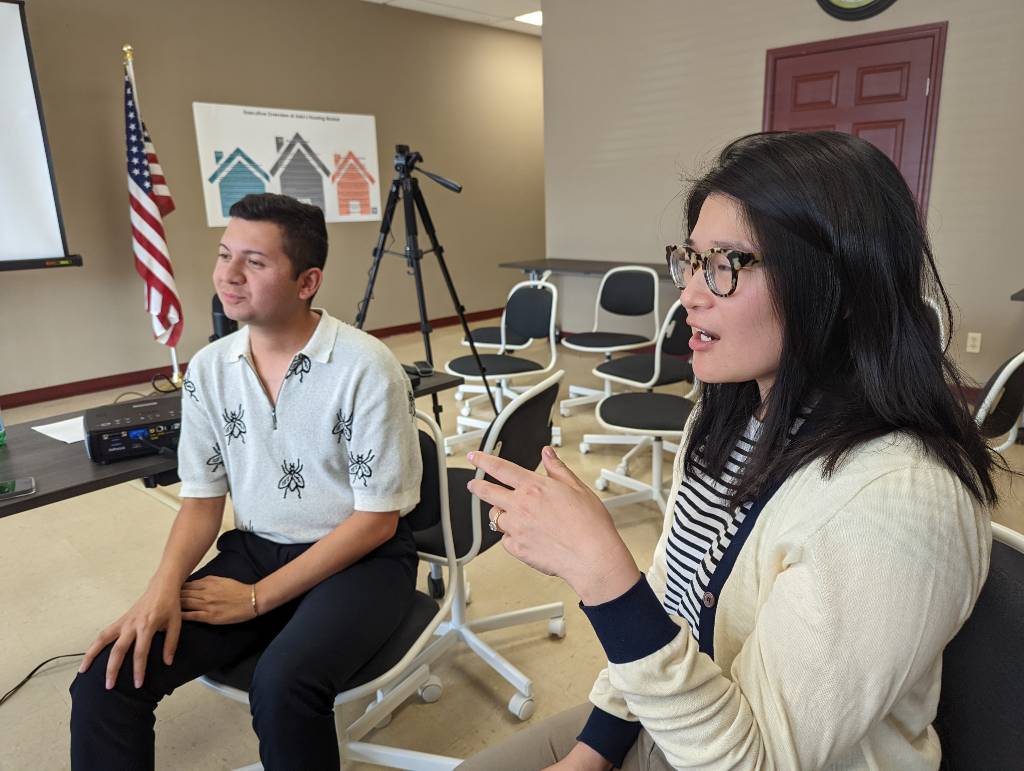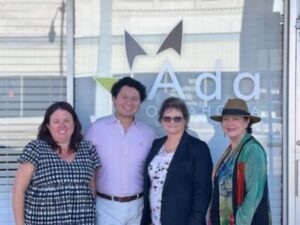
Ada Startup Workshop: How to Create Better Market Research
July 1, 2022 by Jessika Leatherbury
By: Sunnie Dawn Baker
 When the Ada Jobs Foundation updated their Economic Development Strategic Plan in 2020, they realized they didn’t want it to be a strategy to be a document that would simply sit on a shelf. Instead, they wanted to take a more dynamic approach, and created action teams to address three areas critical to economic growth in the community: talent and workforce development, community and housing, and rural innovation.
When the Ada Jobs Foundation updated their Economic Development Strategic Plan in 2020, they realized they didn’t want it to be a strategy to be a document that would simply sit on a shelf. Instead, they wanted to take a more dynamic approach, and created action teams to address three areas critical to economic growth in the community: talent and workforce development, community and housing, and rural innovation.
Through the discussions of the Rural Innovation Action Team, the team realized that, while they do a startup bootcamp workshop series every year, that is only once a year, and they wanted to provide more opportunities to help our local entrepreneurs and startups succeed throughout the year. It was from these conversations that the idea of a series of focused workshops was born. On June 23, 2022, the Ada Jobs Foundation held their first of these Startup Workshops entitled “How to Create Better Market Research.”
The audience varied from successful local entrepreneurs to college students to community stakeholders and even a high school student looking to market his product in a more effective way. The three speakers covered the topic thoroughly, each focusing on their own particular specialty. Jim Eldridge from Ada Jobs Foundation focused on resources to help entrepreneurs find the data that could help them research their markets. Christy Idleman from OG&E built on these ideas of market research, sharing her experience with Business-to-Business research. Sandra Wesson, an expert on marketing and entrepreneurship, educated the audience on helpful ways to market their business to the appropriate audience and get the most out of their marketing plan.
When Eldridge began the workshop, he spoke about the importance of good market research, saying, “Research is essential for startups and small businesses, yet few companies know how to utilize readily available tools.” He acknowledged the fact that many times when entrepreneurs are wanting to start their own business, they don’t really know much about the market or how to find that information, even though this is crucial to developing their marketing strategies and growing their business. In order to help fill this gap, Eldridge showed those in attendance many resources that can help them find this information.
He began with the Census Data Portal and illustrated how to use the filters on this website in order to find the best location, in this case Pontotoc County, and how to find all the different information regarding population demographics that anyone could want. He also explained the difference between the data collected by the Decennial Census, that is done every ten years, and the data from the American Community Survey, which is published more frequently, but may not be as accurate because it is collected from surveys and not the total count of people. After looking at the Census data, Eldridge showed everyone how to access the sales tax records collected by the State of Oklahoma which can help entrepreneurs see how much is being spent in different services or industries in Ada on a monthly basis. After sharing these two resources, he navigated to a feature provided by the Census Bureau called “On the Map” which provides graphics that detail information such as how many people who work in Pontotoc County live here, how many commute, and, also, where those commuters actually live. All this data can help future entrepreneurs determine who their customer base is so they can plan their marketing accordingly.
After Eldridge, Idleman discussed the importance of research in Business-to-Business Markets and where people can find this information. She was very careful to make the distinction between Business-to-Business (B2B) and Business-to-Consumer (B2C) Markets, because they require different approaches. As Idleman said, “B2B ecommerce tends to be more complex than B2C ecommerce. It involves heavier research, more needs-based purchasing, and less marketing-driven buying. Many B2B buyers have very tight parameters around the purchases they can buy.” In other words, when a business is considering purchasing something from another business, it is usually not the choice of a single individual; the decision usually goes through multiple levels of approval and scrutiny before the deal is made, but when a consumer is choosing to buy something from a business it can be more personal or even on an impulse.
Because of the particular challenges in B2B marketing, Idleman suggests compiling both the demographics and the psychographics of the company; demographics focus on the raw data while psychographics focus on the beliefs, values, and interests of the company. While she showed many different resources that entrepreneurs can use, Idleman also made a point of saying that if you don’t have time to do the research, OG&E is always willing to help. In addition to the Census data, she also recommended looking at the Bureau of Labor Statistics as well as a public database provided by the University of Virginia that compiles many different demographic databases into one. It can be found at https://demographics.coopercenter.org/guide-to-publicly-available-demographic-data. She also shared other websites that can find specific businesses in order to help find customers for your business or see what your competition is, including Data Axle, which can be accessed from many public library websites, Connex Oklahoma, which is provided by the Oklahoma Manufacturing Alliance, and the Thomas Industry Update.
After Idleman finished discussing B2B Market Research, Wesson concluded the workshop with an engaging breakdown of how entrepreneurs can successfully market their products to consumers. She began by talking about the importance of having an actual marketing plan and discussing the difference in marketing, branding, and advertising. Whereas branding is about building relationships and an identity for your business, and advertising is paying for information to be disbursed about your product or service, marketing is a process which can involve research and strategies.
 Wesson said that one of the most important things to begin with is the question, “What’s your why?” Or, in other words, as Wesson stated, “Your why, or your story, will help define what your brand stands for, what messages you want to share with others and what your goals are for branding.” Moving from the answer to this question, she explained that an entrepreneur needs to figure out their USP, or Unique Selling Proposition. This is the distinguishing characteristic that would make someone choose your company over another and helps shape the identity and memorability of a company. After determining this information, she introduced how entrepreneurs would next begin working on a marketing plan and start developing the content to market your company or service. Wesson covered topics such as what type of content you should create to how to make the most out of social media. She also gave a list of apps that can be beneficial to small businesses, such as Google My Business, Hootsuite, and Canva.
Wesson said that one of the most important things to begin with is the question, “What’s your why?” Or, in other words, as Wesson stated, “Your why, or your story, will help define what your brand stands for, what messages you want to share with others and what your goals are for branding.” Moving from the answer to this question, she explained that an entrepreneur needs to figure out their USP, or Unique Selling Proposition. This is the distinguishing characteristic that would make someone choose your company over another and helps shape the identity and memorability of a company. After determining this information, she introduced how entrepreneurs would next begin working on a marketing plan and start developing the content to market your company or service. Wesson covered topics such as what type of content you should create to how to make the most out of social media. She also gave a list of apps that can be beneficial to small businesses, such as Google My Business, Hootsuite, and Canva.
In between these three presentations, the attendees were treated to a wealth of focused information on marketing research and strategies for entrepreneurs wanting to do business with both other businesses and consumers. For those who are interested, a video of the workshop can be found on the Ada Jobs Foundation YouTube page and the slide decks used by the presenters can be available upon request by emailing info@growada.com. As always, follow Ada Jobs Foundation social media on Facebook, Instagram, and LinkedIn for information on upcoming events and workshops.
Written by
Jessika Leatherbury
You may also interested in:

Ada Jobs Foundation Looks Ahead: A Vision for Growth and Collaboration in 2025
By: Sunnie Dawn Baker As we begin 2025, the team at the Ada Jobs Foundation (AJF) eagerly awaits the developments in the coming year. While each year holds new possibilities,